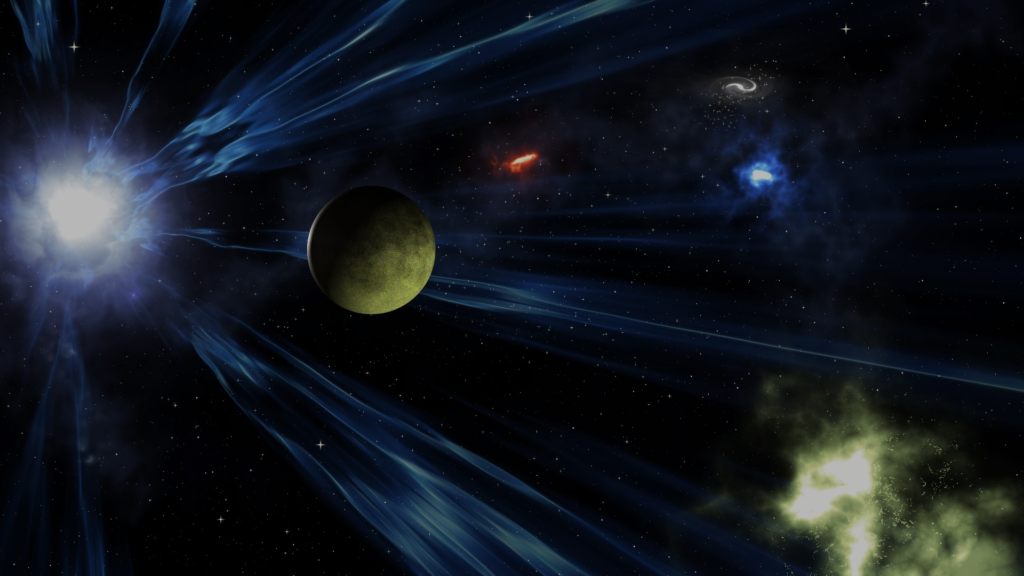## Unraveling the Mysteries of Black Holes: Cosmic Vacuum Cleaners
Have you ever imagined a place where gravity is so strong that not even light can escape? That’s the mind-bending reality of a black hole, a cosmic enigma that continues to captivate scientists and stargazers alike. These aren’t simply holes in space; they are incredibly dense regions of spacetime, formed from the remnants of massive stars, possessing a gravitational pull so intense it warps the very fabric of the universe. Let’s dive into the fascinating world of these cosmic vacuum cleaners!
### 1. The Life and Death of Stars: Forging Black Holes
Black holes aren’t born; they’re created. Think of a star as a giant nuclear furnace, fusing hydrogen into helium and releasing tremendous amounts of energy in the process. This energy counteracts the star’s immense gravity, keeping it stable. However, massive stars (at least eight times the mass of our Sun) eventually run out of fuel. When this happens, the star’s core collapses catastrophically under its own gravity. This collapse triggers a supernova, a spectacular explosion that briefly outshines entire galaxies. If the remaining core is massive enough (more than about three times the Sun’s mass), even the powerful force of the supernova can’t prevent it from collapsing further, ultimately forming a black hole.
Imagine squeezing the entire mass of our Sun into a sphere smaller than a city – that’s the kind of density we’re talking about!
### 2. The Event Horizon: The Point of No Return
The defining feature of a black hole is its event horizon. This is an imaginary sphere surrounding the black hole, marking the point of no return. Anything – stars, planets, even light – that crosses the event horizon is irrevocably pulled towards the singularity at the black hole’s center. Think of it like a one-way street with an incredibly strong, inescapable gravitational pull. Once you pass the event horizon, there’s no turning back!
The size of the event horizon depends on the black hole’s mass. Larger black holes have larger event horizons.
### 3. Gravitational Effects: Bending Space and Time
Black holes don’t just suck things in; their extreme gravity warps the very fabric of spacetime around them. This warping causes light to bend as it passes nearby, a phenomenon known as gravitational lensing. We can actually observe this effect by seeing distorted images of galaxies behind a black hole. Furthermore, the immense gravity also slows down time near the event horizon, a concept explored in science fiction but rooted in Einstein’s theory of general relativity.
Imagine a clock near a black hole ticking slower than a clock far away. The closer you get to the event horizon, the slower time appears to pass!
### 4. Observing the Unobservable: Indirect Evidence
Since light can’t escape a black hole, we can’t directly “see” them. However, we can observe their effects on surrounding matter. Astronomers detect black holes by observing the way they influence the motion of nearby stars and gas. The intense gravity causes these objects to orbit the black hole at incredibly high speeds, providing strong evidence for its presence. Accretion disks – swirling disks of superheated gas and dust – orbiting black holes also emit powerful radiation, making them detectable across vast cosmic distances.
The supermassive black hole at the center of our galaxy, Sagittarius A*, has been indirectly observed through the orbits of stars around it.
### 5. Supermassive Black Holes: Giants at the Galactic Core
While stellar-mass black holes form from the collapse of individual stars, supermassive black holes are truly colossal, containing millions or even billions of times the mass of our Sun. These behemoths reside at the centers of most galaxies, including our own Milky Way. How they form is still a subject of ongoing research, but one leading theory suggests they grow by consuming stars, gas, and even merging with other black holes.
**In Conclusion:**
Black holes, while seemingly mysterious and terrifying, are fundamental components of the universe. Their formation, gravitational effects, and sheer scale continue to fascinate and challenge our understanding of physics and cosmology. There’s still much to learn about these cosmic giants, but ongoing research and advanced telescopes like the James Webb Space Telescope promise to unveil even more of their secrets. What are your thoughts on black holes? Share your ideas and questions in the comments below! And for further exploration, check out resources from NASA and the European Space Agency!


